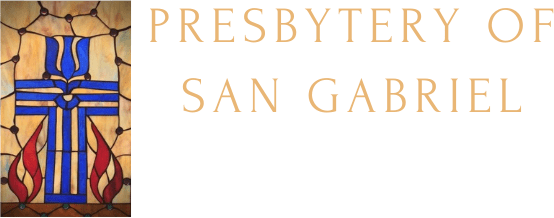Love in Action
Love in Action
How does God’s love abide in anyone who has the world’s goods and sees a brother or sister in need and yet refuses help? Little children, let us love, not in word or speech, but in truth and action.
1 John 3:17-18
I am quite the procrastinator. You may have noticed that at times I am able to reference very current events in this column, because usually I write the column early Monday morning. Sometimes I don’t make the deadline I set for myself, let alone deadlines that others set for me. For instance, I noticed that several cars have registration tags that say 2022, which confused me. Did they get some kind of special tag that is good for two years? Aren’t we still in 2021?
I figured I should look for my tag, which I paid on time but never got around to sticking on my license plate. I did think to put my registration in my car, but I didn’t take the next step of putting the sticker on my license plate. When I did, I noticed that my tag does say 2021, because the month of my car’s registration was December. Oh well, four months late isn’t too bad—I’ve done worse.
In fact, I remember driving down to the Synod Assembly in 2015, which was held in San Diego.
I enjoyed the drive down and was happy to find parking right across from the church. I was disappointed, however, that there was a ticket waiting for me after I left the meeting, because I had not put my new tag on my car, several months after they were due. I don’t get many traffic tickets, thank God, so I considered it a donation to the City of San Diego and paid the $40.50.
To be honest, the reason all of this came back to me was the recent news of conflicts between police and Black men. I don’t know if you noticed, but the initiating act for some of these conflicts are pretty minor. You may have heard that George Floyd was arrested by the police and killed on May 25, 2020, for passing a counterfeit $20 bill.
US Army 2nd Lt. Caron Nazario was pulled over in Virginia as he drove his new Chevrolet Tahoe on December 5, 2020. The vehicle was new enough that Nazario did not have permanent license plates, so the police did not see the temporary plate he taped to the inside of the rear window. He was pursued, ordered to get out of the car without being told why, and eventually he was pepper sprayed, forced face down on the ground and handcuffed.
And recently, just before 2 pm on April 11, the police of Brooklyn Center, Minnesota, pulled over Daunte Wright; officers said that they did so due to the car’s expired registration tag. They later noticed the presence of an object hanging from the car’s rearview mirror—an air freshener. Officers ran Wright’s name and found he had an open arrest warrant which led to the attempt to arrest him.
He first complied, then eluded them and jumped back into his car. During the scuffle that followed, the police officer mistook her gun for a taser and shot him, and he died soon after.
The Stanford Open Policing Project collects and analyzes an average of 50,000 daily traffic stops throughout the country; so far they have analyzed 200 million stops. They report that: “The data show that officers generally stop black drivers at higher rates than white drivers…………….. In nearly every
jurisdiction we find stopped black and Hispanic drivers are searched more often than white drivers.” A common tactic is to stop drivers for simple traffic infractions, such as expired registration tags, and then search the driver and car, a form of “stop and frisk” that has at times escalated to tragic consequences. What was a $40 traffic ticket for me, cost others their life.
These days, there has been a lot of attention given to police actions, but we know that people are facing all kinds of conflicted situations, sometimes for no other reason than the color of their skin, their age, or their gender. At our recent Presbytery meeting, we had the pleasure of breaking into small groups several times. One time we were asked to share the first time when we challenged, or thought about challenging, racism. From what I have heard, the pattern was that some people of color had stories to share, but dominant culture folks were a little stumped by the question.
I have come to understand this, from when I lived in Hawai‘i. There, I was part of the dominant culture, and for the first time I had a sense that having solidarity with the marginalized was an ethical choice, and one for which I may lose some of my privilege. Though I have more practice confronting racism, it helped me understand how this question may be a difficult one to answer.
But we can’t afford not to challenge racism, and people of all races are starting to understand that we can’t just watch out for ourselves; we must watch out for each other. The question, then, is how?
There are many ways to challenge racism, but the scariest is how or whether to act if you witness an act of harassment or other form of hatred. Stop AAPI Hate offers the following advice in multiple languages for persons witnessing hate, at https://stopaapihate.org/safety-tips/:
- Take Approach the targeted person, introduce yourself and offer help.
- Actively listen. Ask before taking any action and respect the targeted person’s wishes. Monitor the situation if needed.
- Ignore Using your discretion, attempt to calm the situation by using your voice, body language or distractions.
- If the situation escalates, invite the targeted person to join you in leaving.
- Offer emotional Help the targeted person by asking how they are feeling. Assist them to figure out what they want to do next.
There are many other models for bystander intervention, such as the Five D’s of Hollaback! But you get the idea. And it reminds me of times when I have been helped by strangers who intervened when I felt unsafe, and I am grateful that God sent them into my life for that moment.
I am very aware (as I mentioned last week) that we are in yet another era of uncertain times. If we are truly blessed, we are passing out of the pandemic phase into a time of post-pandemic stress, and we can’t tell all the ways this stress will be manifested. So I do ask that we all be gentle with ourselves and with each other—but also, look out for each other, and for all of God’s children who are oppressed.
If we believe in Easter, then we are Resurrection People, followers of the risen Christ. Christ’s resurrection proves to us that sin and death are not the final answer, if we have the courage to follow Christ’s call to love one another, and to love beyond word or speech—let us love in truth and action.
I think it was Methodist Bishop Warren Chandler who said that he did not fear crossing the river from life to death because “I belong to a Father who owns the land on both sides of the river.” Because we belong to the God whose power is greater than any sin or hatred, let us love in gentleness, in faith, in community, and in action.
In Christ’s peace,
Wendy

 In the midst of these difficult days comes a rather spectacular metaphor for our “stuck” feelings: the Ever Given cargo ship, run aground in the Suez Canal, blocking the path of any other ship. With 18,300 containers full of goods, the 220,000-ton, 1300-foot ship was helpless to extricate itself of its predicament —and its failure blocked hundreds of other ships from their forward purpose.
In the midst of these difficult days comes a rather spectacular metaphor for our “stuck” feelings: the Ever Given cargo ship, run aground in the Suez Canal, blocking the path of any other ship. With 18,300 containers full of goods, the 220,000-ton, 1300-foot ship was helpless to extricate itself of its predicament —and its failure blocked hundreds of other ships from their forward purpose. The ship stayed stuck for almost a week, and for days no one knew how to free it. One photo of a digger attempting to loosen sand and mud from under the bow seemed to reflect the enormity of the problem, and how miniscule our ability to resolve it.
The ship stayed stuck for almost a week, and for days no one knew how to free it. One photo of a digger attempting to loosen sand and mud from under the bow seemed to reflect the enormity of the problem, and how miniscule our ability to resolve it.